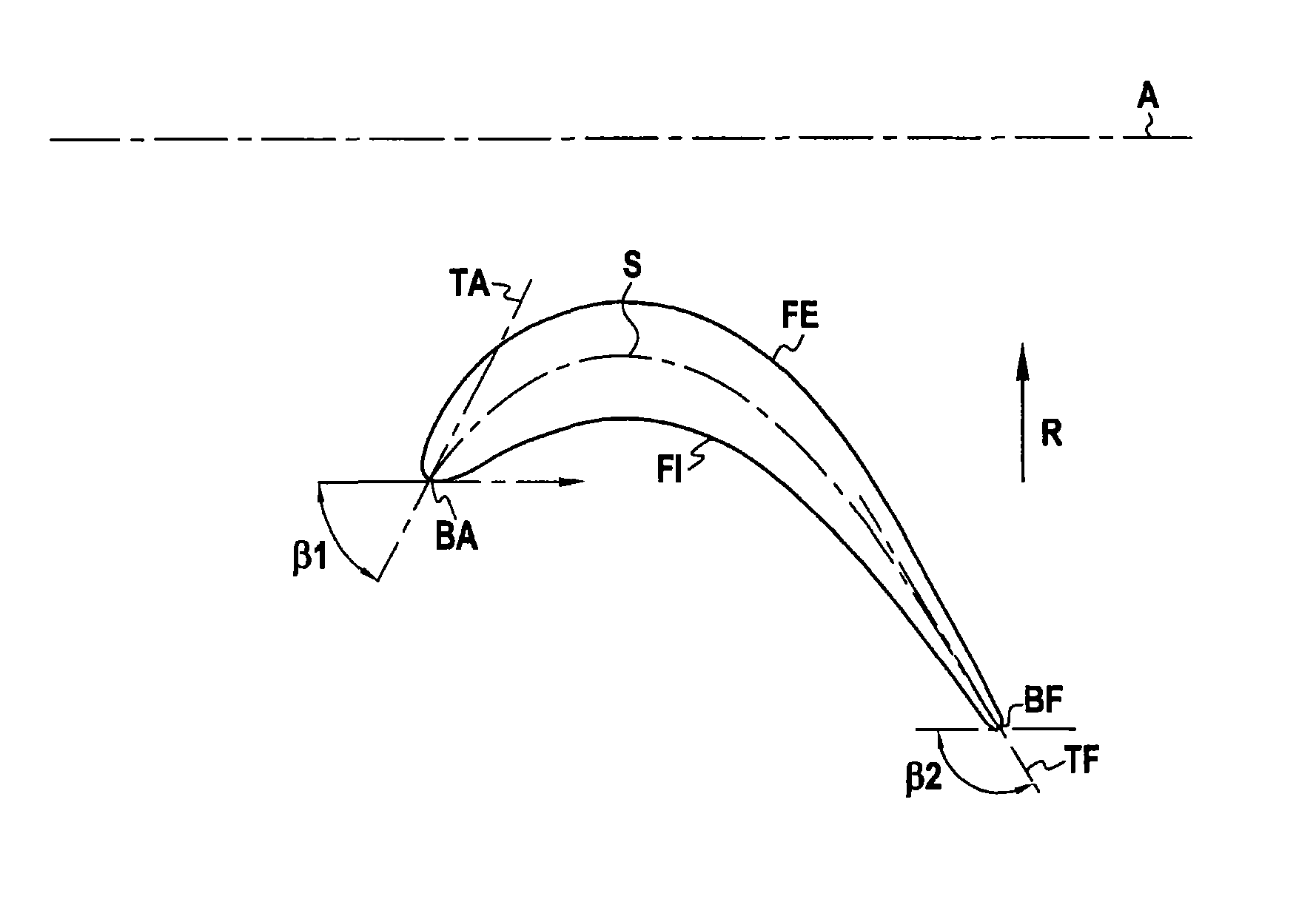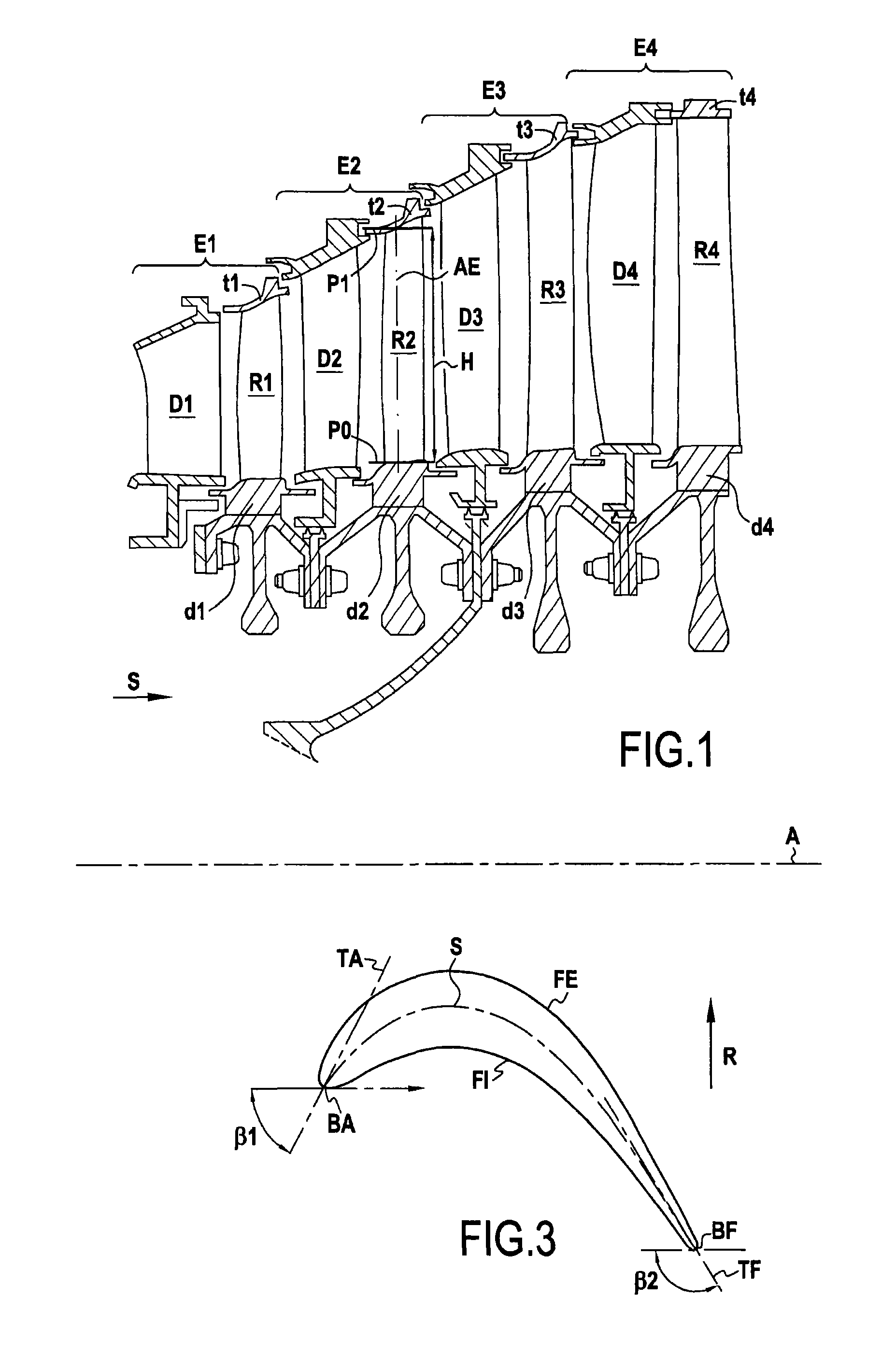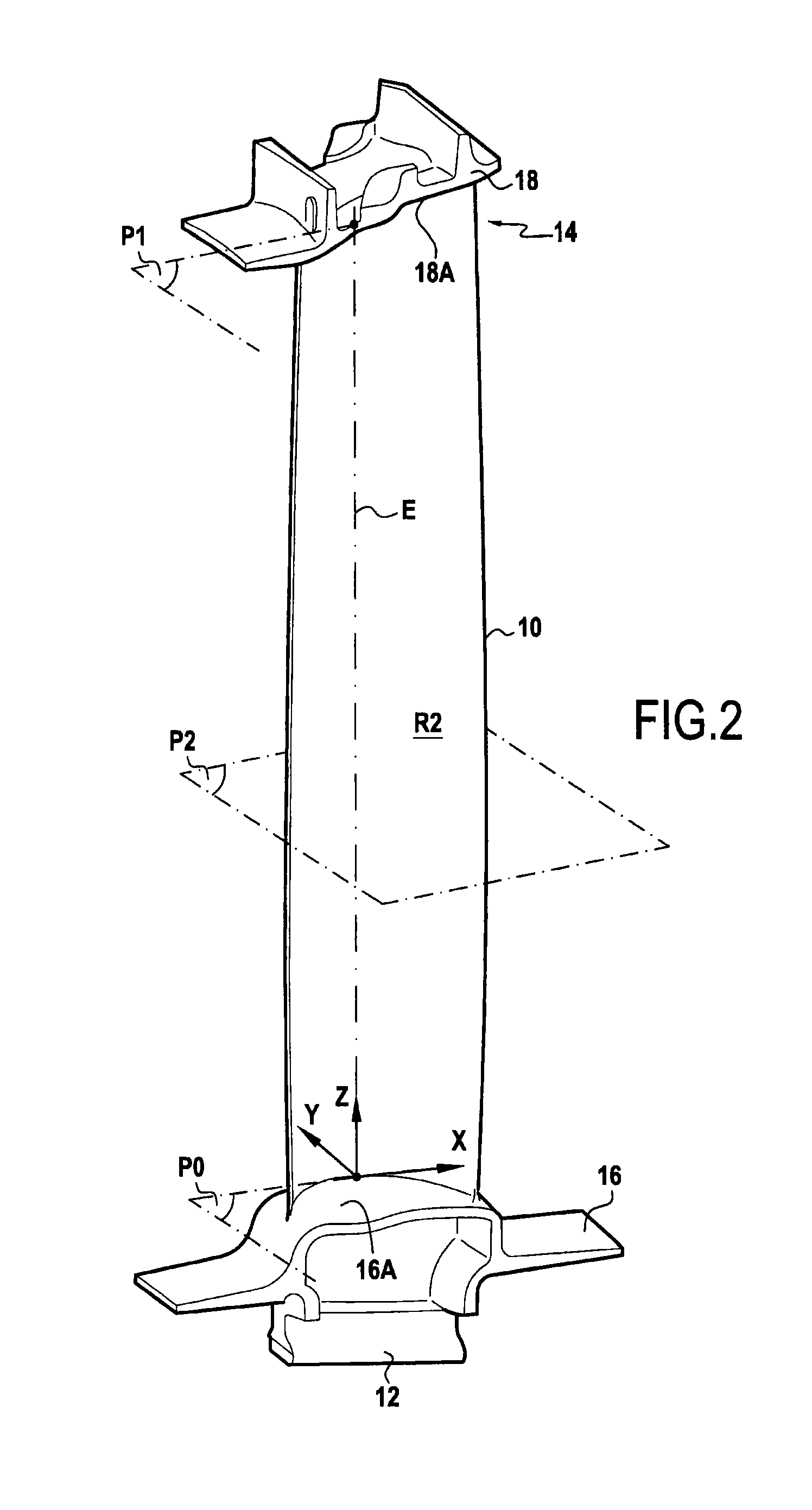Turbine engine blade
a turbine engine and blade technology, applied in the direction of liquid fuel engines, marine propulsion, vessel construction, etc., can solve the problems of secondary phenomena, reduced propulsive efficiency, and additional mechanical fatigue, so as to reduce mechanical fatigue and reduce the load on the blade
- Summary
- Abstract
- Description
- Claims
- Application Information
AI Technical Summary
Benefits of technology
Problems solved by technology
Method used
Image
Examples
Embodiment Construction
[0037]The turbine shown in axial section in FIG. 1 has four stages referenced respectively E1 to E4. In the direction S going from upstream to downstream, each stage comprises a nozzle forming a stator portion of the turbine and having a plurality of radially-oriented vanes, and a rotor wheel forming a rotor portion of the turbine and comprising a plurality of radially-oriented blades.
[0038]In FIG. 1, the nozzle vanes of stages E1 to E4 are respectively referenced D1 to D4, and the blades of the rotor wheels of stages E1 to E4 are respectively referenced R1 to R4.
[0039]The nozzle vanes are fastened at both ends to stationary structure portions, while the blades of the rotor wheels are fastened to rotary disks, respectively referenced d1 to d4 via their roots, which are formed at their radially inner ends, closer to the axis of rotation A of the turbine. In the example shown, the tips of the rotor wheel blades, formed at their radially outer ends, carry outer platforms respectively r...
PUM
 Login to View More
Login to View More Abstract
Description
Claims
Application Information
 Login to View More
Login to View More - R&D
- Intellectual Property
- Life Sciences
- Materials
- Tech Scout
- Unparalleled Data Quality
- Higher Quality Content
- 60% Fewer Hallucinations
Browse by: Latest US Patents, China's latest patents, Technical Efficacy Thesaurus, Application Domain, Technology Topic, Popular Technical Reports.
© 2025 PatSnap. All rights reserved.Legal|Privacy policy|Modern Slavery Act Transparency Statement|Sitemap|About US| Contact US: help@patsnap.com



